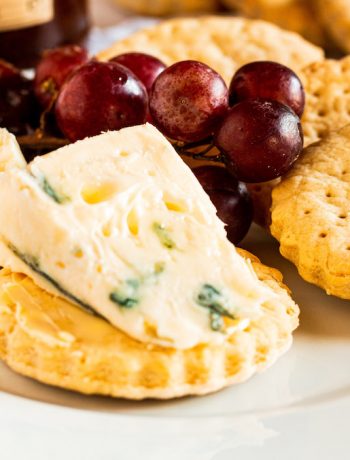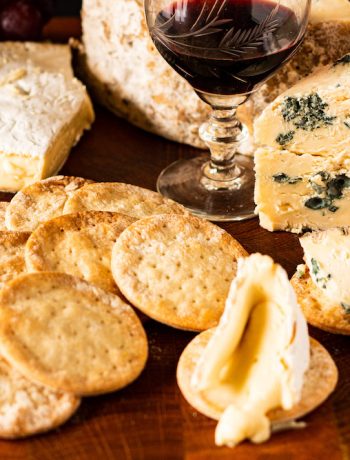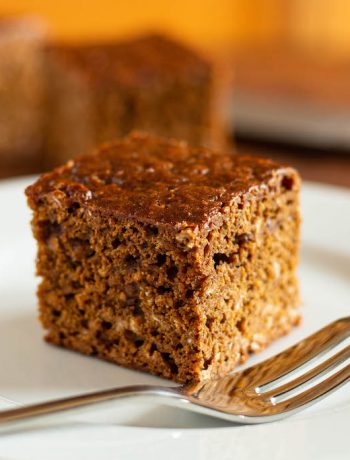The British love to debate the pronunciation of ‘scone.’ Essentially, there are those who say ‘skon’ as in ‘John,’ and there are those who say ‘scone’ as in ‘own.’ The level confusion of how one says ‘scone’ is summed up in this little ditty:
I asked the maid in dulcet tone
To order me a buttered scone;
The silly girl has been and gone
And ordered me a buttered scone.
And if that is not confusing enough, there is a theory that scones were named after the Stone of Destiny that was housed inside the coronation throne of British monarchs, up to and including Queen Elizabeth II. The Stone of Destiny is also known as the Stone of Scone after the abbey in which it used to be kept before the English stole it. Scone in that context is pronounced ‘skoon.’ The online version of Webster’s says that the first recorded use of the word ‘scone’ came in 1513.

The Stone of Scone nestling inside the British coronation throne
While folks debate on how to pronounce scone, there is very little debate about where scones came from. Scones are Scottish. They started out as a ‘quick bread’ (i.e. a bread made with leavening agents other than yeast or eggs) made of oats and baked on a griddle. Once baking powder came on the scene, recipes became refined, and scones evolved into the delicious, dense cakes they are today.
Scones are still very popular in the UK, possibly because of a single event in the early 1840s. It was then that the Anna, the 7th Duchess of Bedford, finally tired of feeling hungry in the afternoons, decided to ask for some sandwiches and cake at 4 o’clock to tide her over until her evening meal four hours later. She continued with this ritual every day, and came to like her ‘afternoon tea’ so much, she would invite her friends over. Because the English are such insufferable social climbers, afternoon tea went viral, particularly among the middle classes. Back in the day, ladies would dress very grandly for afternoon tea. These days, afternoon tea has been pared back to a cup of tea and a Hobnob at one’s desk, but many tourists still book weeks ahead to take tea in swanky, old-school establishments such as The Ritz, the Dorchester and Claridges. Sadly, nobody dresses the part any more.

Anna, 7th Duchess of Bedford (1788 – 1861) – inventor of afternoon tea
Despite the decline of the lavish afternoon tea, scones refuse to die. They are hugely popular in the tourist traps of Devon and Cornwall in the West of England, where they are served in the thousands of tea rooms that line the streets of the villages and towns. In this part of the world, scones are nearly always served with clotted cream and jam. And it is in the West Country where we find the final debate. Do you put the cream on before the jam, or the jam before the cream? The press and those who like to invent controversy to create intrigue will tell you that Devonians are all about cream first, and the Cornish go jam first. The truth is that there is no county-specific tradition for either style, and it all comes down the taste. I like my scones with cream first and then jam because it looks nicer, and I like the sensation of the jam on the top of my palette.
The recipe given here breaks a cardinal rule of a West country cream tea. We like our scones with sultanas in them. In Devon and Cornwall, scones made without any fruit, and adding it can cause bakers to go into an apoplectic fit. But the West country did not invent the scone, so they can get lost on this. I’m putting fruit in mine. It is also worth noting that published recipes for scones are lying to us. They often tell you to roll out to 2cm thick. If you do this, you are making tiny scones. We say 3cm and sacrifice some yield. In general, for scones, you need to minimise all manual handling, and keep things cold while mixing.
Fruit scones
Ingredients
- 75g chilled butter, cubed with some extra for greasing
- 350g self-raising flour
- 1.5 tsp baking powder
- 30g caster sugar
- 75g sultanas
- 150ml milk (you may not need all of it)
- 2 eggs, beaten
Instructions
Set an oven to 220˚C, and lightly grease a baking tray with butter. Put a mixing bowl in the freezer.
Add the flour, baking powder and chilled butter to the cold bowl. Rub the mixture into breadcrumbs. Don't spend too long on this, or the mixture will warm up. Or just use a food processor.
Add the sugar and sultanas and mix through with a spoon. Add 100ml of the milk and all but 2 tbsp of the beaten egg. Mix everything into a soft dough, and knead very briefly (less is more with scones; and this can also be done in the processor).
Roll the mixture out to about 3cm thick, and cut out the scones with a cookie cutter. Do not twist the cutter. Flip the scores over. Put the cut scones onto the tray, and recombine the scraps to make more. You will get between 8–10 scones.
Brush the scones with the reserved egg (do not get any egg down the sides) and bake for 10 mins. After 10 mins, poke the largest one with knitting needle. If the needle comes out clean then the scones are done. If there is a bit of dough on the needle, then give the scones another 2 mins in the oven, turning down to 200˚C.
Remove the baked scones to a wire rack to cool.
Serve with clotted cream and jam.




 (14 votes, average: 3.57 out of 5)
(14 votes, average: 3.57 out of 5)


2 Comments
Paula Seku
25/12/2019 at 9:40 pmNice traditional cookies
Nigel Eastmond
28/12/2019 at 9:51 pmThanks, Paula.